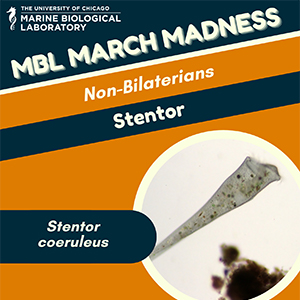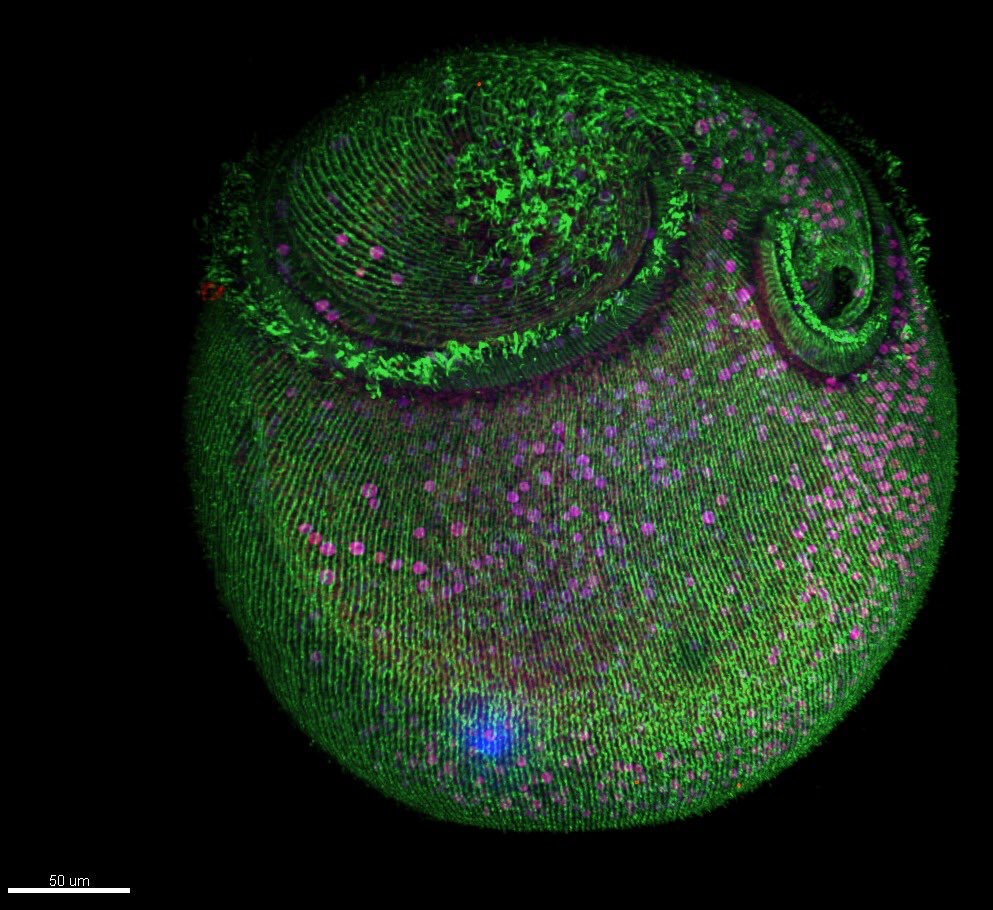MBL March Madness: Stentor


Part of a group of single-cell freshwater protozoans and one of the largest unicellular organisms known, Stentor coeruleus can regenerate as multiple whole organisms when broken into small pieces. Stentor has a long research history at MBL – including studies of its impressive regenerative capacity in the 1890s by Nobel Prize winner and long-time MBL Trustee Thomas Hunt Morgan.
Cool facts
-
- A fragment less than 1/100 the size of an adult can regenerate into a complete organism.
- They can grow up to 2mm in length, so even though they are single-celled, they are visible to the naked eye.
- They are trumpet-shaped but react to external disturbances by contracting themselves into a ball.
(ID Card Photo Credit: Micropix, Wikimedia Commons via CC license)
Stentors and the MBL
Physiology Course Students Create Spectacular Stentor Images
 Microtubule structures in Stentor. Credit: Victoria Yan, MBL Physiology course
Microtubule structures in Stentor. Credit: Victoria Yan, MBL Physiology courseSelect Publications
S. Inoué (1981) Video image processing greatly enhances contrast, quality, and speed in polarization-based microscopy. J Cell Biol. doi.org/10.1083/jcb.89.2.346
Slabodnick, M., Prevo, B., Gross, P., Sheung, J., Marshall, W. (2013) Visualizing Cytoplasmic Flow During Single-cell Wound Healing in Stentor coeruleus. J. Vis. Exp. doi.org/10.3791/50848
Wan KY, Hürlimann SK, Fenix AM, McGillivary RM, Makushok T, Burns E, Sheung JY, Marshall WF. (2020) Reorganization of complex ciliary flows around regenerating Stentor coeruleus. doi.org/10.1098/rstb.2019.0167
Division: Non-Bilateria
While bilaterian animals have a distinct front, back, top, and bottom, non-bilaterian organisms lack that symmetry. Non-bilaterian animals include sponges, jellyfish, corals, comb jellies, sea anemones, and placazoa (simple, free-floating multicellular marine organisms). Learn more about Non-Bilateria here.
Meet the Other Ecdysozoan Organisms
-
- Northern Star Coral (Astrangia poculata)
- Jellyfish (Clytia hemisphaerica)
- Comb Jelly (Mnemiopsis leidyi)
What is MBL March Madness?
Based on the March Madness NCAA basketball tournament, during MBL March Madness, popular MBL organisms face off for your votes. YOU have the opportunity to decide what organism is crowned victorious by voting for your favorite organisms in a series of head-to-head match-ups. Voting will take place on the MBL social media channels from March 29 - April 7.